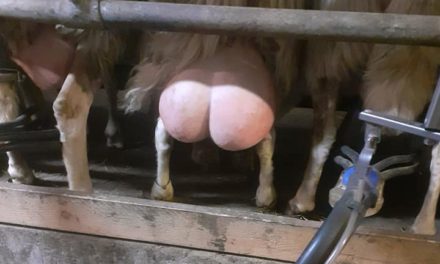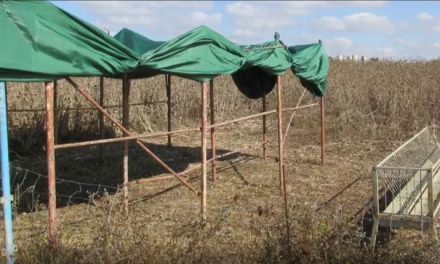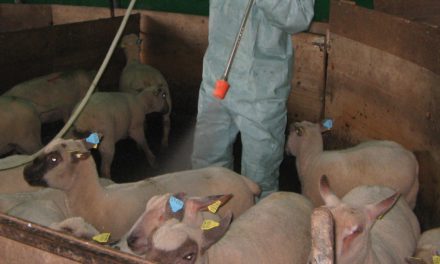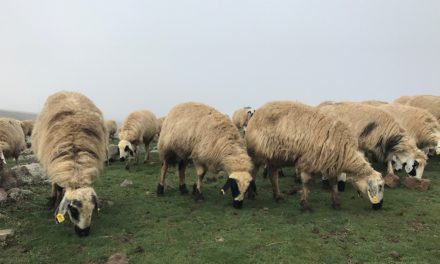This post is also available in:
![]()
![]()
![]()
![]()
![]()
Inclusion and management of Sulla (Sulla coronaria (L.) medik.) in the forage systems
Solution name: Inclusion and management of Sulla (Sulla coronaria (L.) medik.) in the forage systems
Aim: to extend the grazing season; to increase the quality of forage on offer; to decrease livestock production costs to improve robustness of the forage system and sustainability of the farm.
Description:
Sulla (Sulla coronaria (L.) Medik.) is a short perennial legume species widely used as a forage legume in Mediterranean regions. It is a very nutritious and productive forage legume with great potential for livestock enterprises. Until few years ago, its use was manly restricted to areas with alkaline soil and where its native specific rhizobium was available. The microsymbionts of Sulla display a high level of specificity for nodulation and nitrogen fixation. Recent studies have shown that well inoculated Sulla can be grown successfully in soil where usually it wouldn’t be traditionally recommended, broadening its adoption from alkaline to acidic soil as low as pH 5.8 (H2O).
Topic: nutrition
Production: Dairy / Meat
Animal Category: Adult / Lamb / Replacement
Issue:Forage crops (maize, sorgho, kale, rape, fodder beet, etc …)
Level of Solution: Practical
Country: Italy

How to implement it
Inoculation method: Sulla must be inoculated few hours before seeding with a Rhizobium sullae, commercial strain WSM1592. Peat slurry (containing the rhizobia) is prepared mixing the peat with the seed coating adhesive (250 g of peat, 1000 ml adhesive per 30 kg of seed). Seed is inoculated by mixing the slurry with the seed and then pelleting the seed with fine lime. The inoculation of sulla seeds allows to grow this forage where it has never been cultivated before, or to increase its dry matter production by about 65 – 145%.
Seeding: Seeding rate ranges between 25 to 35 kg/ha of germinable seeds. Seeding depth must not exceed 1.5 cm. Two months after seeding, nodulation should be assessed. Some plants per paddock should be carefully removed, and roots washed. Nodules are checked for viability and scored for their presence. Root system is scored following the nodulation chart from Ron Yates, DAFWA (see figure below). The number, colour and position of nodules are evaluated and summarized in a final score. Scores between 3 and 5 indicates an acceptable nodulation and will guarantee a good first year Sulla establishment.
Figure: nodulation chart from Ron Yates, DAFWA

Use: Sulla can be grazed all year, or used to produce good quality hay or silage. Grazing period starts when plants shown the first/second true compound leaf and the sward is 8 – 10 cm of compressed sward height. It is recommended rotational grazing for few hours per day. Daily Grazing time (number of hours per day) has to be modulated following the forage allowance and animal energy requirement. Usually, 4 h/day is the most recommended management. Milking ewes intake about 1,8 – 2,2 kg of DM per day of Sulla when managed at pasture for 22 hours a day. The Intake rate ranged between 100 g DM/head and 75 g DM/head per grazing hour in animal part-time grazing (3 – 6 hours/day) or full time grazing (22 hours/day), respectively (Molle et al.,2003).
Nutrition value: The forage has a high quality (see Table). Its biomass production has a high level of NFC.
Table – Chemical composition and energetic value of Sulla grazed by milked ewes. Average (std.err.)
|
|
|
Autunn |
Winter |
Spring |
Summer |
|
Dry matter |
(% TQ) |
10.23 (0.53) |
11.51 (0.28) |
16.06 (0.51) |
70.32 (5.84) |
|
Crude protein |
(% DM) |
24.25 (0.50) |
21.68 (0.37) |
18.44 (0.36) |
8.75 (0.83) |
|
EE |
‘’ |
2.73 (0.09) |
2.64 (0.06) |
2.32 (0.04) |
0.85 (0.12) |
|
NDF |
‘’ |
38.32 (0.84) |
33.97 (0.66) |
40.83 (0.68) |
65.88 (2.28) |
|
ADF |
‘’ |
27.67 (0.66) |
24.73 (0.48) |
28.86 (0.56) |
50.27 (1.70) |
|
ADL |
‘’ |
11.15 (0.43) |
9.26 (0.34) |
8.98 (0.20) |
10.56 (0.19) |
|
Net energy |
UFL/kg DM |
0.74 (0.01) |
0.95 (0.03) |
0.83 (0.02) |
– |
Expected benefits
The inclusion of sulla in the forage system increases milk production in sheep, improves animal welfare (decrease the urea content of milk compared to the content after grazing on others legumes), extends the grazing period, improves the quality on herbage on offer, it decreases the cultivation costs.
Cost Benefit analysis
The inclusion of Sulla is expected to be profitable for most sheep farms since it reduces the costs of fuel and manpower with respect to annual grasses. Moreover, it strongly reduces the need for fertilizers. Generally, it increases also milk production due to its optimal nutritional values. Profitability in meat farms and/or climates different from the Mediterranean one should be verified.
Sustainability analysis
The use of Sulla is expected to have a positive global environmental impact since the decrease in fuel combined with the increase in grazing, feeding self-sufficiency and the decrement in nitrogen returned to the environment from animals are expected to act on the GHG emissions. It has also to be noted the strong reduction in the use of fertilizers and long-term improvement of the soil quality.
The inclusion of Sulla, a tannin-rich plant, is also expected to improve animal welfare thanks to its anthelmintic effects in livestock.
Prerequisites and/or limits
Sowing Management: soil pH>5,5; light soil cultivation and good early weed control. Sown Sulla in autumn in Mediterranean regions and in spring in temperate environment. Seed must be always sown immediately after inoculation in moisture soil.






